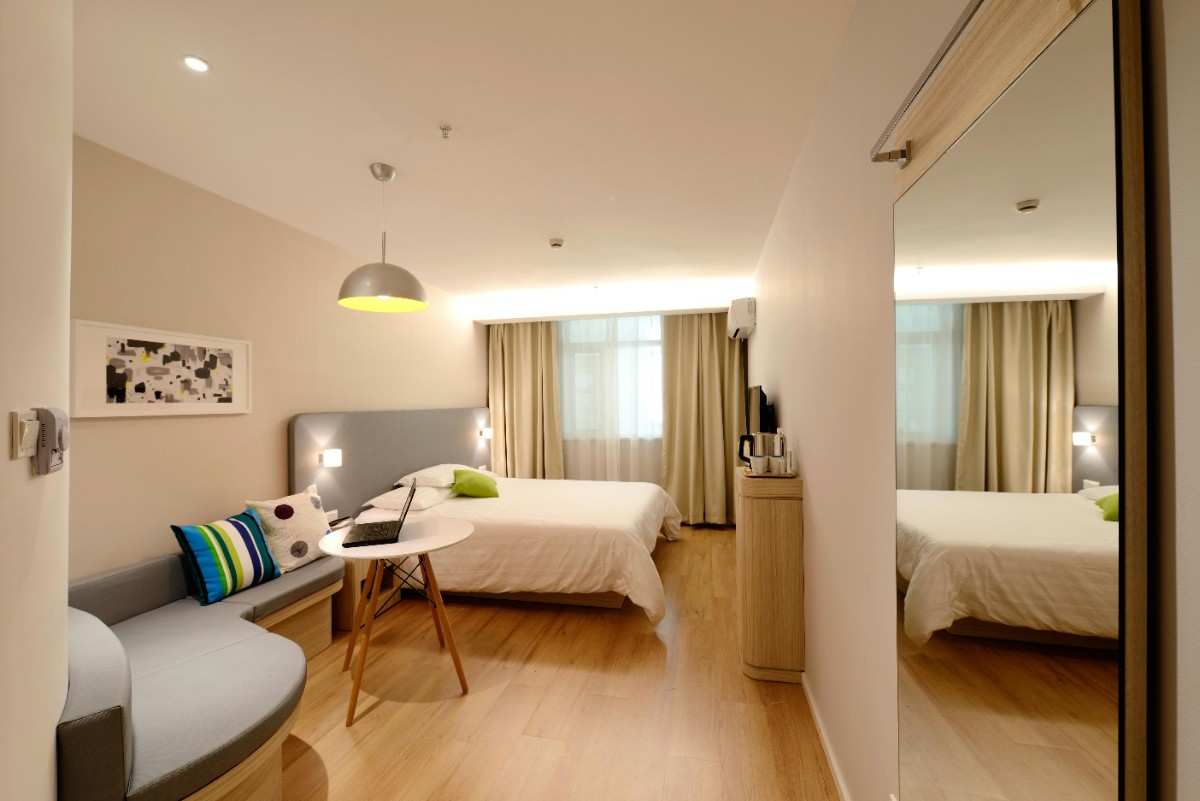Let’s Explore How to Make Mood-Boosting Curtains for Better Sleep for Our Home
They may simply be curtains, but everything they affect in our day to day lives is profound. Curtains are more than a matter of aesthetics, they help to control light, temperature, even our emotional well being. Picking the perfect curtains can really boost your mood during the day and increase your sleep quality. This guide will explain how to pick curtains that are useful for both of these purposes producing an aesthetically pleasing living space.
1. Learning how the Relationship Between Curtains, Sleep and Mood Works
Curtains influence two essential factors for mental and physical health:
Sleep Quality: Maintaining a healthy circadian rhythm depends on good light control. Block and filter light curtains have direct impact on how and if you can fall and stay asleep.
Mood Enhancement: Curtains are important as it determines the ambiance of a room as well as the color, patterns and the materials of the curtains will have an effect on your emotions and productivity.
When you get to know these connections, you can choose curtains more intentionally for your home.
2. Improve Sleep with Choosing Curtains
Block Out Light Effectively is a)
Sunlight being directed on strong at night also produces excess light which usually interferes in the production of melatonin and consequentially cause poor sleep. Here’s how to choose curtains that optimize light control:
1. Blackout Curtains
Benefits: These curtains are made from thick layered fabric that blocks all external light.
Best For: For those living in urban areas with bright streetlights, bedrooms.
Pro Tip: Curtain with the thermal lining provides more insulation.
2. Dual-Layer Curtains
Benefits: Use sheer and black out layers to give flexibility. At nighttime use the blackout layer; during day use the sheer layer to allow in natural light and keep privacy.
Best For: Rooms of irregular light exposure or multifunctional rooms.
3. Motorized Curtains
Benefits: At night, these curtains can be programmed to shut, and in the morning to open a little each time, in an imitation of the sunrise and setting of the sun.
Best For: It’s the people looking for a seamless way to manage their lights.
b) Choosing the Right Fabrics
The fabric determines how much light the curtains will block:
Thick Fabrics: Heavy cotton weaves, velvet, or thermal weaves make excellent blockers of light.
Lined Curtains: If you want better opacity and insulation then select curtains with another lining.
3. Your choice of Curtains to Amp Your Daytime Mood
a) Leverage Color Psychology
Colors have a straight effect on emotions. Choose curtain colors that align with the mood you want to create:
1. Calming Colors
Examples: Blues, greens and neutrals.
Effect: These are colors that promote relaxation, and lower stress.
Best For: Bedrooms and living rooms.
2. Energizing Colors
Examples: Warms are yellows, oranges.
Effect: When used, bright colors will uplift your mood and help creativity flow.
Best For: Home offices and playrooms.
3. Balancing Colors
Examples: Terracotta, olive are earthy tones.
Effect: It is aiding in creating a grounded and cozy space.
Best For: Family rooms and kitchens.
c) Pattern and textures and texture are considered.
Patterns and textures add personality to a space:
Minimalist Patterns: When we talk about modernity we are thinking about clean lines or geometric shapes that focus the eye.
Botanical Prints: The designs mimic nature and in the cool surrounding can make you feel like you’re the only one on earth.
Textured Fabrics: Jacquard or linen adds a depth to any room while making texture seems tangible.
4. Natural Light for Daytime Mood, Choosing Priority
a) Take the most advantage of the amount of light during the day.
The power of natural light is mood enhancing. Here’s how to incorporate it into your curtain choices:
1. Sheer Curtains
Benefits: Let the sunlight in while still keeping it private.
Best For: Soft diffused light home living rooms, dining areas and other kind of spaces where light is diffused.
2. Layered Window Treatments
What to do with versatility, combine blackout curtains with sheers. Then during the day pull back the blackout layer to let sunlight in.
b) Use Curtain Accessories
Accessories like tiebacks, holdbacks, and valances can enhance light control and aesthetics:
Tiebacks: During the days, keep curtain open for maximum sunlight.
Holdbacks: Be ornamental and useful at the same time.
5. Selecting The Perfect Curtains: Practical Tips.
a) You should accurately measure your Windows.
Make sure the curtains are big enough to fall down to the floor while decorating the windows.
For maximum drama, there aren’t many guidelines with curtains that pool slightly farther than they should on the floor.
b) Coordinate the style of Your Home
Choose match curtain fabrics to your existing decor. For instance, in traditional settings silk or velvet, and in modern ones linen.
c) Consider Maintenance
Bring home easily clean able materials for your home with children or pets. Machine washable options will save time and energy.
6. Beyond Aesthetics: Soundproof and Insulation Curtains
a) Soundproofing Benefits
Heavy curtains can absorb sound, making your home quieter:
Curtains such as ‘acoustic’ or ‘noise reducing’ are what to look for.
Ideal for bedrooms or home office in noisy neighborhoods.
b) Energy Efficiency
Thermal curtains help regulate indoor temperatures:
Winter: Insulate windows so you can prevent heat loss.
Summer: Cutting back on cooling costs by keeping the heat out.
7. Budget-Friendly Options
You don’t need to break the bank to find high-quality curtains:
DIY Solutions: Come up with some fabric remnant curtains and sew them yourself.
Online Retailers: Always check whether you are getting discounts on Amazon, Wayfair or IKEA.
Local Markets: To get a unique and budget friendly look, explore local shops.
Creating a Harmonious Living Space with Curtains
Curtains are more than just window coverings; they are tool to improve your quality of life greatly. With some careful thought behind what curtains you choose to use in your home for both sleeping and daytime moods, you can craft a home toward well-being. On light control, color psychology, and fabric choice to get as much out of this often underserved component of interior design as possible. The right curtains can help you have restful nights, uplifting days, and bring your home to a true sanctuary.
FAQs About Mood-Boosting Curtains for Better Sleep Answered:
So what are blackout curtains, and why do they help with sleep?
Next we’re talking blackout curtains, which are made from dense fabrics that prevent external light and help regulate your circadian rhythm for better sleep.
What do the colors on your curtain say about your mood during the day?
The color psychology of emotions affects us by color. Blue tones like calm and yellow tones like energy uplift behave differently in reducing stress.
So can curtains reduce noise?
It’s true, thick or acoustic curtains will absorb sound and make a room quieter, perfect for relaxation or focused work.
Why can dual layer curtains be beneficial?
Sheer and blackout layers are combined for a dual layer that allows for flexibility in how much light is permitted, and how much privacy is required depending on what time of day it is.
What part do thermal curtains play in energy efficiency?
Windows insulated by thermal curtains also insulate during winter and block heat in summer, reducing energy use year round.
How do you keep curtains in good condition?
Curtains are regular vacuumed and spot cleaned. For convenience in maintenance choose machine washable fabrics.



